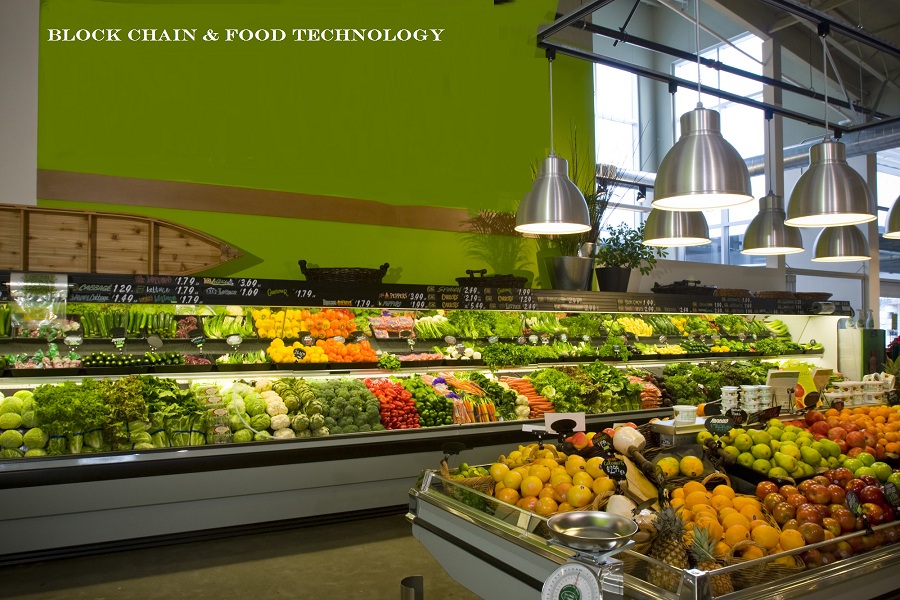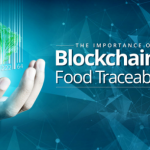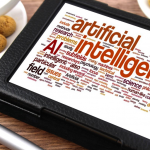
From being associated with the financial services primarily, blockchain is now affecting other industries as well. The food industry isn’t untouched, and that shows in the development around it.
Last year, ten companies, the world’s most prominent consumer packaged goods and food corporations, tied up with IBM. They wanted to include the blockchain technology in the supply chain. The list included the names like Nestle, Walmart, Unilever, etc. Incorporation of Blockchain in the supply chain will increase its visibility and traceability.
But What’s The Need?
Good question. If you look at the supply chain, you will see many channels. It starts with farmers, and before it reaches to a grocer, it goes through warehouses, then to the shipping companies and then to the distributors. It is then that the food arrives at your grocer from where you buy them. Complex, isn’t it?
You must have noticed the stickers of some brand on the vegetables and food you buy. Have you ever thought, they might not even have the idea about which farm that came from? There are high chances for that.
So, when something goes wrong, the company associated with that brand had no clue, they may not even be sure what to do. This event shows that the entire supply chain is not only inefficient but also imprecise.
And if you look into the past, you will see that food has caused some severe damages. Contaminations caused by food causes millions to fall ill, a hundred thousands get hospitalized, and thousands die almost every year. Scary!
In such times, companies need to recall the product from the market that has been causing this havoc. But due to their unclear records, it takes them weeks to trace the cause and take the necessary action. The prolonged duration of action makes matters worse.
And that’s the reason enough for integrating blockchain into the food supply chain.
The Again, Why Blockchain?
The blockchain is like a ledger that is decentralized and public. It creates consistency and a clear audit trail across various parties by providing a unified source of data.
So, using blockchain, companies can easily trace the outbreak back to its source and recall that specific product. The shorter that product stays in the market, the safer consumers will be. And this will also curb their financial losses.
Now, a company can assign a unique identification number to each shipment and connect it to IoT tags. These numbers will be tied to the other information about the products being shipped, like its origin, processing, expiry, etc.
The employees of the supply chain can just check-in the product with its ID number. The blockchain can then track the product securely across the checkpoints over time. Employees can also see the history and real-time data on any product by using that ID. Now, no calling up different parties and exchanging of documents between multiple people.

Walmart- The Pioneer
The largest food retailer in the US has been the pioneer in integrating the blockchain for the food safety. In 2006, Walmart piloted the blockchain for the pork shipments in China, which was a cause of worry regarding safety for the food business.
In the investors meeting in 2017, Walmart declared the pilot project of using blockchain successful. The VP of food safety had noted that they could pull out the information regarding a product in under 3 seconds. It took them a week before the application of blockchain.

This success encouraged them to expand their trial. Mexican mangoes were the next Walmart tracked along with the turkey in partnership with Cargill, their meat supplier. Now, Walmart is the member of the IBM’s consortium, and it is likely that they will continue to expand their use of blockchain.
The Limitations And Confusions
There is no doubt that blockchain could be the evolution, these food companies need. With its structure, it offers an affordable solution to both large organizations and SMEs. But then, it has its limitations as well.
Blockchain can process limited information. Moreover, organizations would need to secure several contracts between them to retain some level of confidentiality. It is because all the data will be accessible. And it would be a task to balance the privacy and transparency at the same time.
The area of agrifood is full of secrets. A handful of companies like Walmart will have more influence and power that the other companies in the same supply chain. So, it would be problematic for some companies. In this case, blockchain is like the solution that is seeking a problem.
Moreover, it is a relatively new technology and is said to be in its infancy still. This fact is making many uncertain about its potential even though the innovation in this technology is happening rapidly. And, its open-source, decentralized structure is a challenge to grasp for many, including the government.
Many have labelled bitcoin as irrational and ridiculous. It has fueled the confusion. Whatever said and done, the biggest challenge for blockchain is participation. It will only work if all parties adopt it. But, as mentioned, some companies aren’t sure of it since they feel other big sharks of the game can exercise their power more than the others.
The Challenge
Not all companies have the same clout as Walmart. And all the food chain companies must engage in blockchain for its successful integration. The technology has great potential in the field of agrifood. But, there is so much to be done. The leaders of the industry should embrace it as an opportunity. This step can enhance the transparency, sustainability, competitiveness, and productivity of this sector.
Closing It Up
The field is still raw, and so is the technology. This process is going to take some time and many changes to incorporate blockchain for enhanced food safety. Walmart has made a start, but the integration of blockchain in the food chain still has a long way to come. This will not only make the system transparent but will also save a lot of chaos during the food contamination. A quick call-back of the contaminated product will save the lives of many.



